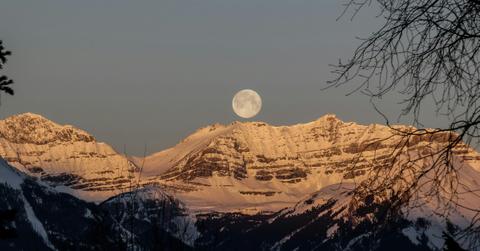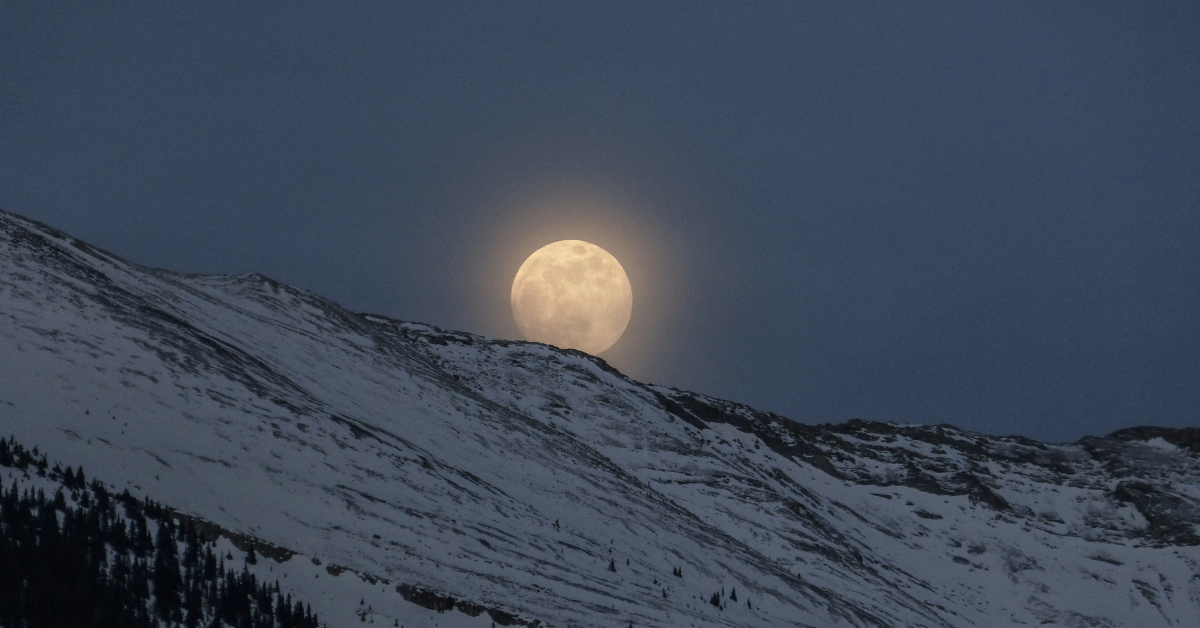February's Full Snow Moon Can Signal a Renewal, Just in Time for Spring
The chilly sounding name for this full moon has its roots in Indigenous culture.
Published Feb. 12 2025, 11:59 a.m. ET

When it comes to the different phases of the moon, some get a little more recognition than others, especially when they coincide with weather or climate related changes like the changing of the seasons.
The snow moon is no exception to that rule. This moon — which typically appears in February, a time that is known for bitter cold and often snowy conditions — is also thought to signal everything from a coming change, to welcoming new life into the world.
If you're sick of winter and ready for spring, this moon is going to be a welcome sight since it's usually one of the final ones during this dark and chilly time.
Continue reading to learn more about the snow moon, including when you will need to turn your eyes to the skies in order to see it in 2025.

When can you see the 2025 snow moon?
The 2025 snow moon is set to make its debut on Feb. 12, 2024. According to CNN, the moon hit its peak around 8:53 a.m. ET, which is the first time anyone in an area with clear skies was be able to see the moon in all of its glory.
But, you will have plenty of time to catch a glimpse of the snow moon while it hangs above the Earth, since it will remain visible through Thursday evening, Feb. 13, per CNN.
What's the meaning of the snow moon?
The meaning of the snow moon has its roots in Indigenous culture that dates back to the First Americans. Sometimes also called the hungry moon or bony moon, this period was a notoriously difficult one and often arrived at time when it was hard for people and animals to find enough food to survive, according to the Old Farmer's Almanac.
But, the snow moon isn't just known for scarcity, it also has some other names that symbolize a more celebratory time: birth. The Old Farmer's Almanac notes that the Ojibwe and Tingit tribes named this moon after the traditional arrival of new bear cubs, calling it a bear moon and a black bear moon, respectively.
Similarly, according to PopSugar, the snow moon can also beckon a time of renewal, as well as invite people to reflect on their lives and futures.
The Dakota went with an animal theme for this moon as well, calling it the racoon moon. Meanwhile the Algonquins used a name that may be familiar to Americans who celebrate Groundhog's Day, calling it the groundhog moon.
Why is it called the snow moon?
As I mentioned, the moon gets its name from the fact that it appears in February, which AccuWeather notes is the snowiest month of the year for much of the country. In fact, the snow moon happens around the end of what is known as solar winter, a period of time that runs from the start of November to the start of February.
And it's not just modern times that see a snowy February. Captain Jonathan Carver came away from his 1760s meeting with the Naudowessi people with a new understanding of the weather in America. According to the Old Farmer's Almanac, he wrote about his experience, stating that the Naudowessi called this moon the snow moon “because more snow commonly falls during this month than any other in the winter.”
Missed the snow moon? Fear not, another full moon will be arriving right around the corner in March. According to CNN, the next one will occur on March 14, 2025 and be called the worm moon. Given what we know about the naming of the snow moon, it's likely that the next full moon will represent the changing of the seasons and the stirring of all things big and small.